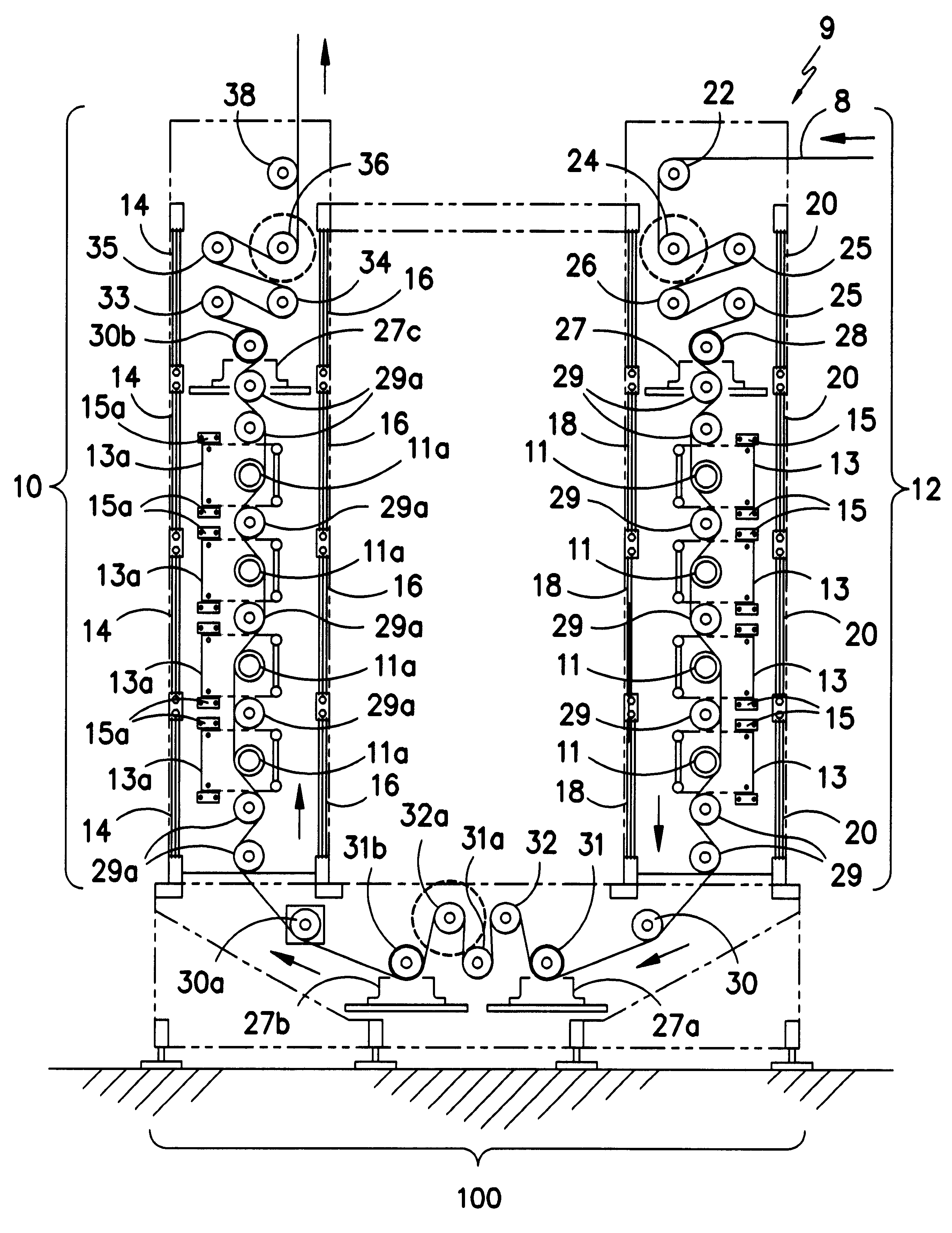Range-dyed face finished fabrics exhibiting non-directional surface fiber characteristics
a technology of non-directional surface fibers and finished fabrics, applied in the dyeing process, weaving, pattern making, etc., can solve the problems of not having a prior teaching nor fair suggestion within, affecting the quality of finished fabrics, and a certain amount of napping simultaneously, so as to enhance subsequent fabric processing and strength. , the effect of high cost-effectiveness
- Summary
- Abstract
- Description
- Claims
- Application Information
AI Technical Summary
Benefits of technology
Problems solved by technology
Method used
Image
Examples
example 1
A sample 7.5 ounce per linear yard (66 inches wide) plain weave fabric comprised of an intimate blend of 65% polyester and 35% cotton and completely constructed of open-end spun yarns was treated. The fabric was woven with sized (polyvinyl alcohol) yarns into a structure of 102 ends to 52 picks per square inch. After weaving, the fabric was not scoured to remove the size and then was subjected to treatment with the four-roll machine noted above. After treatment, the sample was first scoured to remove the immobilizing size, then mercerized (to open up the cotton fibers), and subsequently dyed through a range-dyed, continuous, thermosol process. This range-dyed process was performed by running (continuous immersion procedure) the web through a dyebath comprising both polyester dyes (specifically 0.01466 lb / gal of Disperse Yellow 114, 0.05570 lb / gal Disperse Red 167, and 0.22867 Disperse Blue 79) and cotton dyes (0.22163 Vat Violet 13, 0.17034 lb / gal Vat Violet 1, and 0.17446 Vat Blue ...
example 2
The same base fabric as in EXAMPLE 1 was treated in the same manner except that a red color was imparted to the fabric through utilization of polyester dyes (specifically 0.04827 lb / gal of Disperse Red 5 and 0.16743 lb / gal Disperse Red 356) and cotton dyes (0.02661 lb / gal Reactive Orange 116, 0.47170 lb / gal Reactive Red 238, and 0.00671 lb / gal Reactive Blue 235), with 0.1 lb / gal of an antimigrant (Astrotherm.RTM. 111B), 0.01868 lb / gal 20% aqueous acetic acid, and 0.01250 lb / gal of a penetrant (an anionic ethoxylated alcohol available from Clariant under the tradename Penetrant EH) all in an aqueous solution. The sample was washed and tested in the same manner as in EXAMPLE 1 as well. The resultant fabric exhibited the following tabulated directionality characteristics:
From the perspective of directionality then, the sample fabric exhibited no visual color variations on the surface at the selected location from the first direction to its exact opposite. For a range-dyed, finished fab...
example 3
The same base fabric as in EXAMPLE 1 was treated in the same manner except that a light blue-green color (seafoam) was imparted to the fabric through utilization of a polyester dyes (specifically 0.00532 lb / gal of Disperse Yellow 114, 0.00138 lb / gal Disperse Red 356, and 0.00392 Disperse Blue 165) and cotton dyes (0.00825 Vat Yellow 33, 0.00037 lb / gal Vat Red 10, and 0.01762 Vat Blue 66), with 0.1 lb / gal of an antimigrant (Astrotherm.RTM. 111B) and 0.00933 20% aqueous acetic acid, all in an aqueous solution. The sample was washed and tested in the same manner as in EXAMPLE 1 as well. The resultant fabric exhibited the following tabulated directionality characteristics:
From the perspective of directionality then, the sample fabric exhibited no visual color variations on the surface at the selected location from one perception angle to its exact opposite. For a range-dyed, finished fabric, such a lack of directional characteristics is highly unique, desirable, and unexpected.
PUM
| Property | Measurement | Unit |
|---|---|---|
| gloss angle | aaaaa | aaaaa |
| gloss angle | aaaaa | aaaaa |
| pressure | aaaaa | aaaaa |
Abstract
Description
Claims
Application Information
 Login to View More
Login to View More - R&D
- Intellectual Property
- Life Sciences
- Materials
- Tech Scout
- Unparalleled Data Quality
- Higher Quality Content
- 60% Fewer Hallucinations
Browse by: Latest US Patents, China's latest patents, Technical Efficacy Thesaurus, Application Domain, Technology Topic, Popular Technical Reports.
© 2025 PatSnap. All rights reserved.Legal|Privacy policy|Modern Slavery Act Transparency Statement|Sitemap|About US| Contact US: help@patsnap.com


